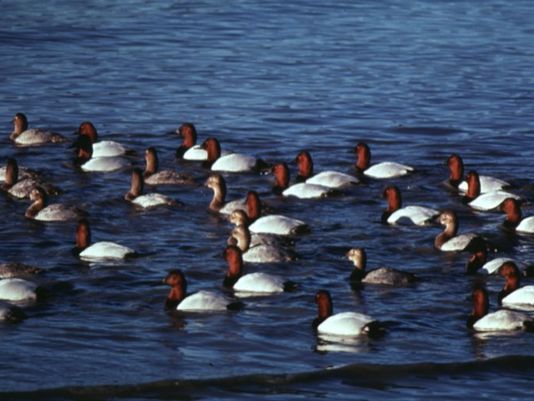
An estimated 3,000 birds - most of them American coots and ducks - have died in an outbreak of avian cholera since early December in an event that still is unfolding. As many as 10 percent of Walker Lake's ducks may have died.
"It is still an ongoing outbreak," said Peregrine Wolff, veterinarian for the Nevada Department of Wildlife.
The event marks the first time for an outbreak of avian cholera in Nevada since the 1980s, Wolff said.
The highly infectious and quick-killing disease is unrelated to the avian flu that has spread among waterfowl in neighboring states and which experts said last Friday was found in a duck in Nevada's Lincoln County late in January. Avian cholera poses no threat to people or dogs.
The Department of Wildlife was first notified by hunters in early December that they were finding dead ducks around Walker Lake. It was the wrong time of year for the most common culprit when it comes to Nevada bird die-offs, avian botulism, so experts suspected something else was responsible for a die-off that appeared fairly large in scale.
"There's not a lot of things that kill a lot of birds quickly but avian cholera in one of them," Wolff said.
Tests of bird carcasses conducted at the National Wildlife Health Center lab in Madison, Wis., revealed the birds had died of avian cholera.
The outbreak likely started when infected ducks or geese flew to Walker Lake and mixed with other birds. Live bacteria is released into the environment from dead or dying birds and can quickly infect healthy ones. Infected birds die within two days but can expire in as little as six hours.
"When an outbreak is going on, it often occurs when a lot of birds are concentrated in one area," Wolff said.
About 1,000 dead birds have been picked up around the lake but the number killed is probably much larger because many dead birds are never seen, Wolff said. More than 700 were picked up last Friday along a seven-mile stretch of shore by a volunteer crew of Walker Lake area residents. The dead birds were buried in a landfill.
"We need to take care of it because they don't have the manpower to do it," resident Sheri Samson said of the decision to help the Department of Wildlife by collecting carcasses.
The die-off has resulted in an unsightly and smelly problem in a scenic place residents love to walk and otherwise enjoy themselves, Samson said.
"It's an active beach area for all of us. It doesn't feel comfortable to walk our pets there," she said, adding that another cleanup is planned soon.
The outbreak will likely have to play itself out over coming weeks until wintering birds fly away, Wolff said.
"At this point, there's not much we can do except wait for the birds to start disbursing," Wolff said. "It's a concern because we will lose some birds, but it's only going to affect what's on the lake. Will it have a large population impact? Probably not."
WALKER LAKE BIRD DIE-OFF
Of the 706 dead birds collected last Friday, here is a breakdown:
American coots: 546
Mallards: 50
Gadwalls: 37
Ruddy Ducks: 29
Wigeons: 16
Shovelers: 13
Seagulls: 12
Buffleheads: 2
Cormorant: 1
Source: Nevada Department of Wildlife.



Reader Comments
to our Newsletter